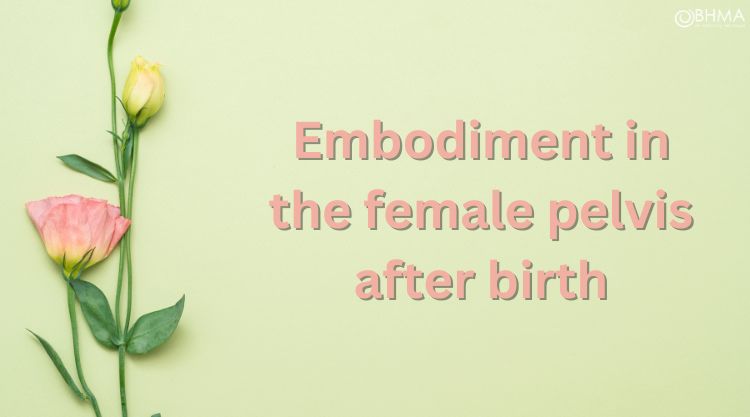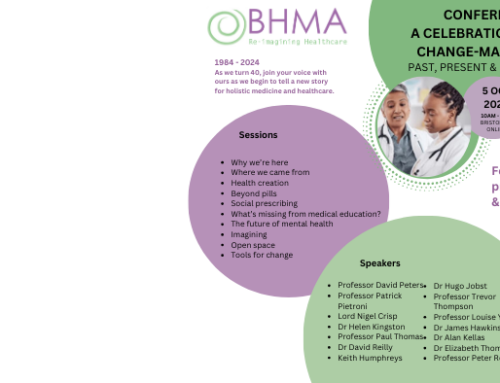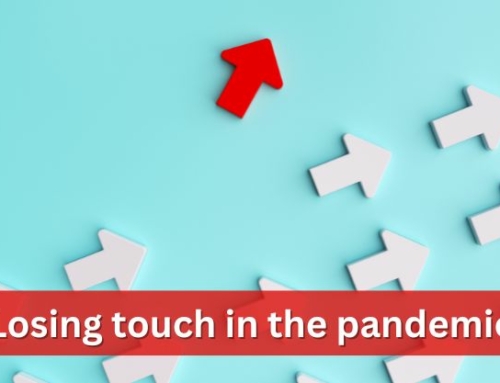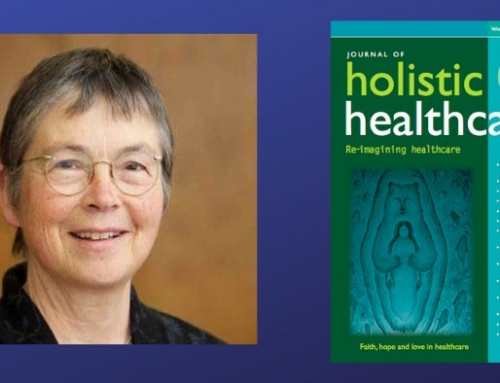Embodiment in the female pelvis after birth
Rebecca Davies, Osteopath
Published in JHH 19.2- Embodiment and bodywork
Introduction
When asked if I would like to write something on embodiment and the loss of the inhabited body I jumped at the chance. Helping women come back home to their bodies feels like the essence of the work that I do. Women come to see me for many different reasons – for fertility issues, recovering from miscarriage, pregnancy support, postpartum support or wanting relief from chronic pelvic pain, vulvadynia, dyspareunia and issues with orgasm. In this article I will focus on my approach to postpartum support.
The problem
Postpartum dysfunction of some kind of is common – estimated in the US at 23.7% prevalence of at least one pelvic floor disorder (Hallock & Handa, 2016). I suspect this figure is on the rise as levels of intervention in labour increase. But be that as it may, much of it goes undiagnosed, even though the associated problems, if untreated, tend to worsen with age and menopause. Approximately one in five women will undergo surgery for genital prolapse or urinary incontinence by the age of 85 (Milsom & Gyhagen, 2019).
Where postpartum pelvic dysfunctions are concerned, medical professionals are not necessarily the experts who know best. We need to find better ways to put women front and centre. Because if their physical and emotional trauma is not understood, or ignored and not taken into account, their care will at best be sub-optimal, at worst re-traumatising. Many women tell me they had no adequate postpartum check. Others have only done so after they specifically requested it or after their problems were particularly severe or got worse over time. And none of them have been offered what I would call a holistic approach to their problems. Consequently there must be many women who have for all sorts of reasons never spoken up about their experiences: shame is very common, blaming oneself and feeling at fault is another but perhaps above all, simply not knowing there may be help out there and who to turn to.
My work
My approach is very different to the mainstream approach which to my mind is sadly failing women. The holistic healing methods I use aim to help a woman become more embodied. My approach is a synthesis of the various modalities I have trained in but at its centre osteopathy and holistic pelvic care. Osteopathy’s core principles of tapping into the body’s innate healing capacity, the reciprocal relationship between function and structure, the principles of fluid dynamics in finding optimal balance of pressures between the cavities of the body and the connectivity of the bodies fascial systems play into my approach using visceral, cranial and structural osteopathy. Holistic pelvic care, a modality created and taught by Tami Lynn Kent, author of Wild Feminine, is a form of vaginal massage used to balance pelvic floor muscles. In this approach I identify tensions and imbalances in tone and strength and presence in the vagina and pelvic floor muscles and around the cervix. Becoming present is key as I find the body and perhaps especially this most intimate part of the body holds memory imprints as tension patterns that we can start to release when we become aware of them.
I see many women with pain and dysfunction following difficult births. Their suffering is both physical (with pelvic pain, pelvic floor dysfunction, prolapse and urinary incontinence) and emotional (feeling disconnected, disturbed emotionally, upset and not at peace with what they went through). Many of the women who come to me are holding this trauma in their bodies and their vaginas. They may attribute this to intrusive experiences during childbirth after medical procedures which they felt had taken away their autonomy and boundaries were unknowingly overstepped when they were feeling overwhelmed and helpless. In the aftermath of a birth trauma they come to me, sometimes feeling powerless and distressed, and the core of my work is in helping them reconnect and be present to what is happening in their body so they can begin processing embodied residues of distressing memories and transmute them into something positive. Women who feel separated from their pelvic bowls might say ‘it doesn’t feel like my body anymore’ or ‘I never think about that part of my body’. This disconnect and numbness can have an effect on physical function (leading to urinary incontinence or reduced sensation in the vagina) but also a direct impact on a woman’s vitality and sense of herself as a woman. Very commonly the only thing a woman has been told to do is pelvic floor squeezes; some are told to use an app that reminds them to do it. This won’t get to the root of the problem and in my experience can lead to greater disconnect and dysfunction. For optimal function of the pelvic floor all four muscular quadrants (front/back/left/right) must be able to activate. If the pelvic floor is not acting as a balanced whole then simply telling a woman to do more pelvic floor squeezes may actually compound her problem. I have found that both a felt sense of embodied presence and muscle balance are crucially important: a woman won’t be able to connect with and activate the parts she can’t bring into presence. A single session of balancing and clearing and bringing in pelvic presence can improve pelvic floor function. As a first step, becoming present with what is happening in this part of her body can be profound and may even be the first time a woman has ever fully connected with her own vagina and pelvic bowl.
In clinic
Women find they relate very differently to their experience of the birth process in the course of this work. At the beginning of a session I may ask a woman to respond to the statement ‘I am safe, my baby is safe and the birth process is complete’. Initially if she didn’t feel this was so, by the end of the session when I ask again, she will feel differently and possibly at greater peace and with more acceptance of the birth experience. This shift will have a positive influence on her relationship with her child. There will be changes too in pelvic floor function. A woman who finds it very hard to contract her pelvic floor or even connect with it will at the end of the session say she can contract it in a stronger, deeper and more connected way than before.
‘The holistic healing methods I use aim to help a woman become more embodied’
On a physical level I look for tone and strength, examining internally the four muscular quadrants (front/back/left/right) and in the superficial/middle and deep layers. I compare tone and strength in each quadrant, and identify areas of tenderness or numbness, and whether there is tension and balance around the cervix, uterus, urethra and bladder. I check how a woman connects with the energy of her vagina, ovaries and uterus. Areas of tenderness, numbness or disconnect and weakness are common, and all have a story behind them so I give space in the session and help guide a woman to release these patterns. A woman’s body and mind have to be completely ready for this work and working with this most intimate area of her body I must be deeply respectful of the wisdom she is holding. I do this in a way that holds sacred space for her, honouring her in this process of healing.
At the start of the session a woman can have a very minimal contraction, say on the right side of her pelvic floor, find it very hard to engage the muscles and sustain a contraction and has to really think about contracting it. By the end of a session I always see significant improvements – the muscles engage much more easily this time without the same effort, they can contract for longer periods and they can engage the parts of the pelvic floor they had difficulty connecting with at the beginning. There is always less tenderness at the end of a session and greater sensitivity where there was numbness. The result of this is more connection and feeling in this area leading to a greater ability to experience pleasure and a sense of wholeness. Once presence and balance is there then it is possible to work on exercises to encourage strength and agility in this area and the exercises I give help a woman learn to exercise control over the different parts to increase her proprioceptive awareness of this area and I combine this with breathwork and visualisations. This can all have an effect to reduce stress and urge incontinence. This powerful work is still in its infancy and I hope to see more research into studying the effects of this work. For further reading with case histories I point you to the books Mothering from your Center and Wild Feminine by Tami Lynn Kent.
My work helps to bring a woman home to her body, present to her sacred nature and to help bring her back to an awareness of her wholeness. When presence returns to our pelvic bowl and deep emotions held there are processed, tensions are released and with that strength and tone returns.
The future of holistic postpartum healing work
I believe we have a long way to go in women’s health in the mainstream approach to supporting postpartum women. Keys are helping a woman to become fully embodied and connected after a birth which didn’t go to plan. I would love to see every woman given the opportunity to be seen and heard after her birth – from the outside her birth story might not seem traumatic but it is how she has interpreted it, how safe she feels, how safe she feels her baby is that is important. Holding sacred space and applying some of the tools I have briefly outlined here can go a long way to help heal a woman both emotionally and physically and help her significantly on her way to restoring optimal function. This will help to future-proof her body as she ages and goes into menopause. I have also heard and seen firsthand many times how this work helps to change the relationship they have with their child. I have seen mothers go from being anxious about their baby and children to feeling peace love and acceptance. This in turn helps our next generation to grow up embodied.
At its roots my approach holds reverence for the human body, I listen to it and I let it guide me and I help women to become more connected and learn to become more conscious of and able to listen to their bodies. While I would love to see less intervention at birth which would lead to fewer postpartum issues I would also love to see a holistic preventative approach to women’s health which could have a significant positive impact on a woman’s state of being and health and help prevent serious problems down the line. I would encourage any woman who feels disconnected with her pelvic bowl or that things just aren’t quite right to seek a holistic approach – see a practitioner who deals with this approach and use the exercises described in Wild Feminine. I would also encourage women and the medical system to stop viewing postpartum pelvic dysfunction as ‘normal’. Doing so only leads women to accept the status quo and suffer unnecessarily.
References
Hallock J & Handa V (2016) The epidemiology of pelvic floor disorders and childbirth: an update. Obstetrics and Gynecology Clinics of North America, 43(1) 1–13. doiI:10.1016/j.ogc.2015.10.008
Milsom I & Gyhagen M (2019) Breaking news in the prediction of pelvic floor disorders. Best Practice Research Clinical Obstetrics & Gynaecology, 54, 41–48. doi: 10.1016/j.bpobgyn.2018.05.004





